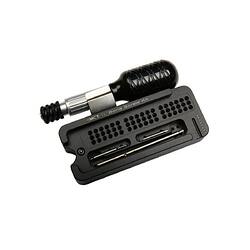Welcome to DDSGadget Education
Below are the most recent posts from our community, including the latest case from This Week In Implants TM, product specific questions, and product instructions and tips.
Filter by Topic:
Presents a case demonstrating a new, and simpler technique for a sinus lift that utilizes ridge spreaders.
AI continues to be a hot topic across the entire healthcare industry. Implant dentistry is no exception.
This post highlights a new study that addresses the age-old question: Which sinus lift technique is preferable: Crestal (Indirect) or Lateral (Open/Direct)? Both surgical techniques are used to increase the height of bone in the posterior maxilla for dental implant placement, but they differ in their approach and execution.
Drilling technique can significantly affect osseointegration by influencing the integrity of the osteotomy site, the bone-to-implant contact, and the mechanical properties of the surrounding bone, such as density and quality.
This extraction case utilizes piezosurgery and the Osteogen Plug to achieve clinical success. Piezosurgery can enhance the safety and efficacy of extractions. The technique utilizes ultrasonic vibrations to precisely cut bone tissue while minimizing damage to surrounding soft tissues.
Electrolytic cleaning, using the Galvosurge device, is a decontamination technique that utilizes an electric field to remove biofilm and contaminants from the surfaces of dental implants. Recently, there was a new study released which examined the effect of this treatment on the mechanical properties of dental implants.
This case demonstrates the use of a new material, the DALI Flex Graft, to help simplify contour augmentation around an implant to address a ridge deficiency.
This case demonstrates, a unique, but highly effective way to enhance your GBR and ensure excellent surgical outcomes with the use of a DALI Amnion-Chorion membrane in a double-layer membrane technique.
In this case, the DALI One Graft Plug was used to successfully preserve the alveolar ridge following extraction of a mandibular incisor with severe bone loss.
We discuss a really interesting study from that investigated the use of newer perforated titanium‐reinforced dense‐polytetrafluoroethylene (PTFE) mesh when covered with a collagen membrane.
A new study applied a modified version of the socket shield technique to delayed implant placement and surprisingly found it to be quite beneficial in several respects.
With continued rapid advancements in AI and other underlying technologies, it seems inevitable that robotic surgery, despite the still considerable limitations, will improve and will have a major impact on implant surgery in the years ahead.
This post focuses on the topic of placement of implants in infected sites, following the release of a new 2-to-12 year clinical study that compared the survival rate and the success rate of single tooth implants placed and restored immediately after extraction in non-infected, and infected sites.
Multi-unit abutments can be used to make the process of denture conversions much smoother than implant level prefabricated non-engaging abutments.
As is well known, autogenous grafts, when appropriately indicated, remain the gold standard when it comes to grafting. Gingival augmentation is no exception.
Cortical bone perforation (intramarrow penetration) refers to the intentional creation of small holes in the cortical bone. It aims to enhance angiogenesis and osteogenesis during guided bone regeneration procedures.
We highlight a study from the Brånemark Clinic in Gothenburg, Sweden, that followed up on implant treatments from 1982-1985
Porcine collagen membranes, like OsseoSeal, are popular due to their flexibility and adaptability when hydrated. But, they can pose some challenges if you do not follow some basic clinical procedures.
Artificial intelligence (AI) is already revolutionizing many medical areas, but its application for implant dentistry is still not entirely clear.
The video below discusses the regeneration of fenestration defects at the time of extraction and immediate implant placement.
A palatal full thickness flap confirmed our suspicion. The root fragment was removed, the defect was degranulated, and the implant surface was decontaminated with a Nd:Yag laser.
What role do collagen plugs play in socket preservation and can other biomaterials enhance the benefits of collagen plugs?
This patient presents with periimplantitis of the lower left quadrant. Removal of existing implants with Guided Bone Regeneration is required. The tent pole technique for GBR was used.
While the success rate of dental implants remains very high, unfortunately some do fail. In this post, we review the basic causes of failure, as well as the accepted techniques for removing failed implants.
In this short video case, Dr. Gober, demonstrates one way of avoiding the need for a lateral sinus lift via the placement of an additional implant. The video also reviews the proven GBR techniques we have covered in previous videos.
This case involved a 70-year old male who presented with a failing bridge in the lower right posterior quadrant.
We review the different types of PTFE membranes, explain why microporous ePTFE membranes (MP-ePTFE), such as Cytoflex Tefguard are probably the best current option.
There are many soft tissue grafting techniques that have been proposed that aim to improve soft tissue and achieve an adequate width of keratinized tissue (KT).
We will review the popular sinus lift techniques, all of which aim in some way to reduce the risk of the procedure, including the the risk of schneiderian membrane perforation

The OsteoGen Plug combines synthetic bone graft (Osteogen crystals) with a collagen plug to yield and affordable way to clinically deliver bone graft for socket preservation!
FAQ for OsseoSeal a resorbable collagen membrane derived from purified porcine pericardium.
This case video reviews specific techniques for implant uncovery following a successful GBR to help provide a stable peri-implant tissue complex.
This video demonstrates the use of DALI Acellular Dermis for soft tissue grafting, specifically for root coverage.
In this video case, Fractured #29 and missing #30 were treated. #29 was extracted and an immediate implant was placed along with an implant in site #30.

This video is a 2-part series which details the treatment of a hopeless maxillary anterior tooth. Part one discusses post-extraction socket healing and site development for implant placement. Part two will discuss the steps of implant placement, provisionalization, and final restoration.
Instructions for the Horizontal Centrifuge for PRF, which provides the latest cutting-edge technology for the PRF protocol at an affordable price.
FAQ for Fractured Screw Kit. The only you kit you need to remove a fractured or broken screw and save the implant.

FAQ for Implant Removal Kit. The tools you need to remove a failed dental implant while minimizing trauma to the bone.
OsseoSeal Bovine Bone Graft has 510-K Approval by FDA as substantially equivalent to BioOss.
Cytoplast TM TXT is a non-resorbable PTFE membrane, or dPTFE membrane. We offer an equivalent product called Cytoflex Textured Tefguard
